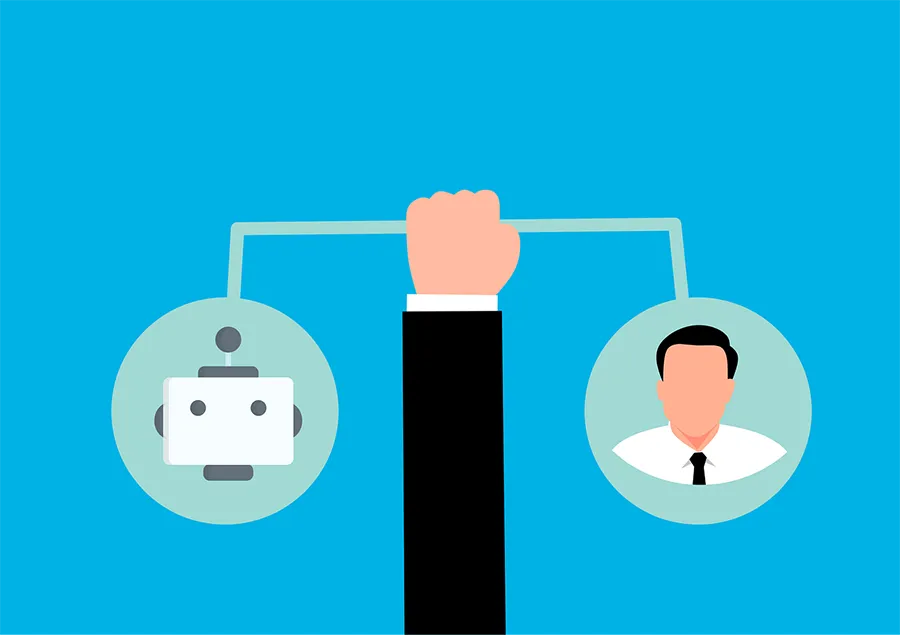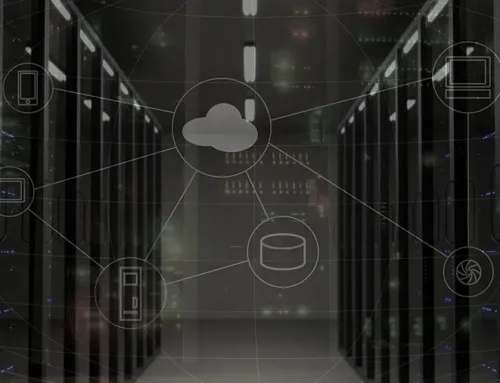Artificial Intelligence (AI) is revolutionising the way we live, think, and work. From automating routine work to helping us predict the future, AI is now at the heart of today’s business. But with the advance of efficient AI, we start to face one significant question: How do we find the balance between AI efficiency and creative humans in future work?
The next era of business victory will be powered by the combination of humans and machines, not by machines alone. It may be improving workflow, customer experience, or even mods that allow you to Handle E-commerce Platforms like Restrict Payment methods PrestaShop not by replacing human creativity with AI precision, but by integrating the two will determine the work environment of tomorrow.
AI At Work
The impact of AI on the workplace has been much more than mere automation. It is now fueling decision-making, customer interactions, hiring decisions, marketing campaigns, and product design. Companies take advantage of AI to improve productivity, reduce cost,s and gain competitive advantages by crunching through massive volumes of data more quickly and reliably than any human could.
For instance
- In health care, AI forecasts patient outcomes and accelerates diagnoses.
- In finance, algorithms sniff out fraud in milliseconds.
Machine learning is product recommendations and predicting consumer behavior, and optimising inventory in e-commerce.
On the PrestaShop side of things, AI is even empowering merchants to make data-based decisions. When used in conjunction with modules such as Restrict Payment methods PrestaShop, businesses can analyze buyer data and automatically adjust the payment systems that are made available to a customer based on their profile — increasing security and boosting conversion rates.
The Efficiency Revolution: How AI Can Transform Work Roles
AI allows businesses to focus on value-added efforts by taking over repetitive, time-consuming, and data-heavy activities. This allows human workers to concentrate on strategic, creative, and relationship-oriented elements of their work.
Task Automation
Tools powered by AI are able to automate everything from scheduling meetings and handling email to processing invoices and analyzing vast quantities of data. On the other hand, in an eCommerce platform, automation is concerned with personalised recommendations, abandoned cart recovery, and payment control.
Modules like Restrict Payment methods PrestaShop are examples of how the use of AI-driven automation can be utilised in e-commerce. By restricting certain payment options by region, kind of product, or customer group, store owners can not only have their business transactions processed quickly but also stay in the good books when it comes to compliance and save users time, without having to do so for each order manually.
Cost and Time Efficiency
o reduces the opportunity for human error and increases speed and cost-effectiveness. McKinsey estimates that AI has a productivity prize across industries worth between $2.5 and $4.4 trillion every year. Yet this efficiency can also have a downside — diminished human supervision and creativity in certain jobs.
Smarter Decision-Making
A predictive analytics AI allows leaders to make better business decisions. Whether predicting market trends, optimising marketing budgets, or discovering customer segments, AI works with the kind of data that humans would need months to collect.
But while AI can tell us what might happen, it still requires human intuition to understand the implications and respond creatively.
The Other Side of Work: Creativity and empathy for our humanity
Humans may not be as efficient as AI, but we are still the best at being creative, having emotional intelligence, and moral reasoning. These features will guide future study.
Creativity and Original Thought
Artificial intelligence can come up with ideas based on data, but it does not truly create without human guidance. Human creativity derives from context, emotion, and lived experience — something no algorithm can mimic. The most successful innovations in the world are achieved when human imagination is combined with AI’s analytical power.
Yes, marketing teams can employ A.I. to analyze customer predilections, but it’s human creativity that lays out an emotion-stirring campaign that the audience will truly connect with.
Emotional Intelligence and Leadership
The more jobs that are digitised, the more human empathy will be prized. Leadership and mentorship, human relations with customers, all depend on understanding people’s emotions and motivations, on cultural niceties — things at which AI still stinks.
Ethics and Responsibility
AI systems are taught using data; that data can be biased or incomplete. AI decisions need human ethical oversight to be fair, transparent, and inclusive. It’s critical to balance AI with human judgment, so as to avoid discriminatory and unethical business conduct.
Perfect Together: How AI and Humans Will Work Side by Side
The future of work is about augmenting human capability, not replacing it with AI.
AI as a Creative Assistant
AI has a role to play in speeding up creative work by coming up with concepts, helping with designs, and predicting fashions. For example:
- Authors leverage AI to think of article concepts.
- Designers rely on AI tools for color palettes and layout suggestions.
- Musicians employ AI bots to mix and master songs for them with speed.
Such co-creation frees humans to focus on vision, storytelling, and emotional depth and lets AI do the heavy lifting in terms of repetitive or data-laden work.
Personalised and Human Touches in Ecommerce
Personalisation is everything in digital commerce. AI assists businesses in curating customer experiences, but humans make sure the tone, design, and message ring true.
For example, Restrict Payment methods in PrestaShop. Strategically applied, it lets merchants offer a customised checkout experience — only showing the payment methods that make sense based upon a customer’s preferences or location. When combined with human-led marketing and design tactics, this can provide a frictionless yet secure shopping environment.
Data + Imagination = Invention
AI gives us insight; humans inspire us. Together, they create the power of innovation. And when data-driven insights that companies work into products and campaigns merge with human storytelling and design, those are the times when we get more out of what matters.
Struggles of Combining AI and Human Creativity
Although the balance could be harmonious, it’s not easy to strike when it comes to AI and human creative output.
Over-Automation
An over-reliance on AI can mean loss of orginality and authenticity. For example, pure AI text would not have the emotion or storytelling depth of a human’s speech. Companies have to make sure that humans continue to be the heart and soul of creative processes.
Gaps in Skills and Work Displacement
Automation, however, will generate a need for new skills such as data literacy, prompt engineering, and AI management. Organisations need to upskill their workforce in areas they will be required to take on AI-enabled roles.
Ethical and Privacy Concerns
AI relies on data to learn, which makes concerns about privacy and surveillance paramount. Clear-cut data governance and ethical protocols are essential for maintaining the public’s trust.
Integration Complexity
The adoption of AI can be complicated, as inevitable costs become an obstacle for some businesses — especially small and medium eCommerce shops. So the platforms like Prestashop make the integration easy using modules such as Restrict Payment methods Prestashop, which help in automating some decisions without depending on programming knowledge.
The Future of Work – How eCommerce Will Change The Way We Work
E-commerce – one of the poster industries for AI-human cooperation. Another great example of this dynamic AI-human relationship is out on pitches! Online shops, a Cloud-based AI service that we can use for:
- Predicting customer preferences
- Managing pricing dynamically
- Detecting fraud
- Enhancing checkout experiences
But the real success is when these AI systems are not acting alone, but working in tandem with a human perspective. Shop owners, for example, use modules such as Restrict Payment methods PrestaShop to automatically display which payment options should be available for various locations or customers — a decision made not just by AI-based analytics but also human business sense.
This is the perfect balance as it does not sacrifice either efficiency or personalisation and control.
Preparing for the AI-Creativity Future
To succeed in this hybrid future, three things are paramount for business and professionals:
Upskilling for AI Collaboration
AI will not be the job killer that many think it will. Critical thinking, creativity, communication, and AI literacy will be some of the essential skills. Learning how to steer and interpret AI tools will be as valuable a skill as plugging in code.
Building Human-Centered Work Cultures
Companies will need to create work environments in which A.I. supplements human labor, rather than replaces it. This encompasses reshaping jobs, creativity promotion, and ethical limits in automation.
Leveraging Technology Strategically
Companies should embed AI where it adds measurable value, like efficiency, cost savings, and precision — but keep humans in the loop of creative and ethical decision-making.
For example, with Restrict Payment methods PrestaShop, managing payment control automatically becomes a smart decision — it saves time and assures that customer trust is not challenged but maintained by the customised checkout experiences.
The Future of Work: A Fusion of Intelligence
The distinction between human intelligence and artificial intelligence will nearly disappear in the coming decade. AI will not simply be a tool — it will be a partner. Yet creativity, empathy, and ethics will remain uniquely human powers.
The businesses that will succeed are ones which:
- Blend AI’s analytical precision with human imagination.
- Automate the mundane and repetitive, but keep the creation human.
Apply technology, not just for doing things better, more efficiently, and faster, but make it work for us in supporting the realisation of human potential.
eCommerce more broadly will continue to see this blend with human-focused marketing, design, and storytelling, not to mention tools like Restrict Payment methods PrestaShop. The union makes for an economy without that sting of efficiency over humanity.
Conclusion
The future of work is not a zero-sum game between humans and machines — it’s a collaborative journey. AI delivers efficiency, speed, intelligence; humans deliver creativity, empathy, visions. Which is true: Together, they can do what neither one alone could.
In the march towards a future where we’re augmented by AI, the point isn’t to supplant human creativity but to supercharge it. Thus, by striking an appropriate balance — the way platforms like PrestaShop do when they augment automation (for example, with Restrict Payment methods for PrestaShop) with customisation — we can shore up workplaces and economies that are both more efficient and more imaginative, inclusive, human.





